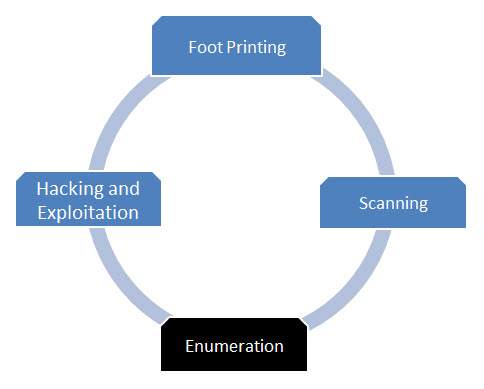How to do Scanning?
Scanning refers to a set of procedures for identifying active hosts , ports and services in a network.
Scanning is one of the components of intelligence gathering an attacker uses to create a profile of the target organization.
Types of Scanning
1. Network Scanning.2. Vulnerability Scanning.
Network Scanning
Objectives of Network Scanning are Identifying live hosts and MAC Addresses.
List of Network Scanning Softwares.
1. NMAP.
2. Angry IP Scanner.
3. Advanced IP Scanner.
4. Pingtester.
Vulnerability Scan
It is a proactive method for analyzing vulnerabilities on target network with help of vulnerability scanning.
vulnerabilities can be classified as severe,high,medium,low and information based on risks found on the target.
List of commercial vulnerability scanners used in coperate companies.
1. Nessus VS
2. Saint VS
3. Qualys VS
4. Nexpose VS
5. GFI Languard VS
6. Coreimpact VS
7. Solar winds engineers toolset VS
Scanning Counter Measures
1. Block unwanted ports at the firewall.
2. Hide sensitive information from public view.
3. Configure firewall and intrusion detection system(IDS).
4. Rules to detect and block probes.
5. Use custom ruleset to lockdown the network.
6. Ensure that routing and filtering mechanisms cannot be by passed using specific source codes or source routing techniques.
7. Understand the network configuration and its accessable ports by launching TCP and UDP port scans alongwith ICMP probes against your own IP address space.
vulnerabilities can be classified as severe,high,medium,low and information based on risks found on the target.
List of commercial vulnerability scanners used in coperate companies.
1. Nessus VS
2. Saint VS
3. Qualys VS
4. Nexpose VS
5. GFI Languard VS
6. Coreimpact VS
7. Solar winds engineers toolset VS
Scanning Counter Measures
1. Block unwanted ports at the firewall.
2. Hide sensitive information from public view.
3. Configure firewall and intrusion detection system(IDS).
4. Rules to detect and block probes.
5. Use custom ruleset to lockdown the network.
6. Ensure that routing and filtering mechanisms cannot be by passed using specific source codes or source routing techniques.
7. Understand the network configuration and its accessable ports by launching TCP and UDP port scans alongwith ICMP probes against your own IP address space.
Enumeration

It is defined as the process of extracting usernames, machine names, network resources, shares and services from a system.
Types of enumeration attacks conducted on networks.
1. Netbios enumeration
2. SNMP enumeration
3. LDAP enumeration
4. NTP enumeration
5. SMTP enumeration
6. DNS enumeration
Malware Threats
1. Trojan horse is a program in which harmful code is contained inside apparently harmless software or data in such a way that it can get control and do its chosen form of damage such as corrupting the files on our HDD.
Trojan horses can be created with an extension of ".exe",".bat",".com",".vbs",".pif",".scr" and ".php".
2. Virus is a program or piece of code i.e, loaded on to our computer without our knowledge and runs against our wishes.
Virus ( Vital information resource under siege )
3. Worm is a harmful software program that can self replicate on computers via computer networks without us being aware that our machine has become infected. The secondary stage of Virus is worm.
Commonly computer worms are spread in one of the following ways.
1. Files sent as email attachments.
2. Via a link to a website.
3. Via a link sent in an chat message.
4. Via peer to peer file sharing network.
5. Some worms are spread as network packets these directly penetrate the computer memory and then the worm code is activated
Server side exploits are also called worms.

Comments
Post a Comment